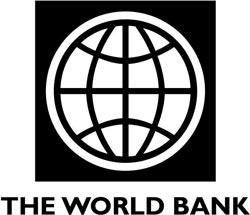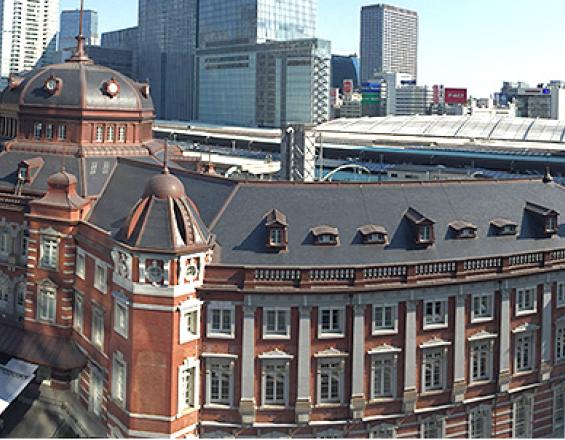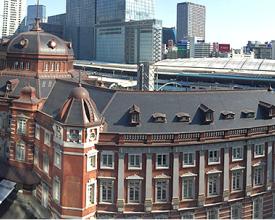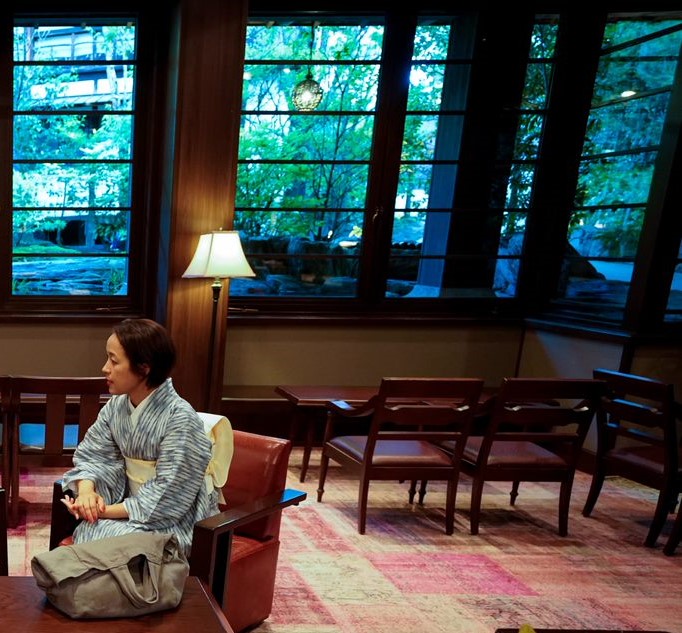
Promoting Grade-A Office Districts with an Upgraded Railway Hub for Global Business Competitiveness

The districts of Otemachi-Marunouchi-Yurakucho (OMY) are progressively forming into the global business, financial and economic center of the nation. The area is encompassing the oldest and largest railway hub in Japan, similar to Grand Central Station in New York and King’s Cross Square Station in London. Although the area once lost its competitive position, it revived through various redevelopment practices by private entities. The OMY districts were designated under a special law as a Urban Renaissance Urgent Development Area wherein land use regulations are relaxed. Fiscal advantages are also rewarded for private landlords and developers to propose urban redevelopment plans more flexibly and actively in the district. Thanks to a variety of incentives given for private stakeholders by this law, more efficient and profitable redevelopment projects were successfully delivered in the OMY districts.
Context
Challenges addressed
The OMY area once lost its competitive position with the emergence of domestic and international competitors, especially after the crash of Japan’s asset bubble economy around 1991. The new sub-centers of Shinjuku, Shibuya, and Ikebukuro with updated office estates provided by rival developers largely relocated a number of business tenants and related producer services from the outdated buildings in Marunouchi. More critically, the main offices of the Tokyo Metropolitan Government and other important public corporations were moved out around 1991. Furthermore, multinational corporations gradually moved their headquarter functions from Tokyo to emerging international business hubs in Asia, such as Hong Kong, Singapore, and Shanghai.
Location
Process
Summary of the process
The provision of high-amenity office districts around transportation hubs appears to be a common economic development strategy across global business centers, such as New York, London, Hong Kong, Singapore, and Shanghai nowadays. However, those regeneration practices are often debatable due in large part to unintended social consequences, such as urban gentrification and spatial segregation. Indeed, it is critical to promote grade-A office districts for global competitiveness with public-private entities in a sustainable manner. In case of OMY, private redevelopment projects could meet both commercial and social objectives as market incentives are properly given for public capital improvements. Also, the long-term commitment of major developers and the establishment of horizontal partnerships were key for intergeneration redevelopments and sustainable area management.
Building Blocks
Market Incentives for Social Capital Improvements
Accompanied by private redevelopment projects, the national government decided to restore the old redbrick building of Tokyo Station, initially built in 1912 and damaged by firebombing during World War II. While the symbolic building restoration was expected to have broader social and cultural benefits for the neighboring business districts, its project cost was estimated around JPY50 billion. In order to meet both social and commercial objectives, the site of Tokyo Station was extensively designated as a zone for the special FAR exemption and allowed to transfer the unused FARs from the historic redbrick building to the neighboring lots for new commercial tower developments. The station building restoration, partially financed by the FAR transfer revenues, was successfully completed in 2013 by a railway company, which also developed two 205-meter tall skyscrapers among the towers with extra FARs, and reinvested the increase in land value of the densified grade-A office buildings to cover the railway finance. To improve the district further, the current provision of a multimodal transportation square for regular bus and taxi services plans is to be completed by East Japan Railway Company in partnership with the Tokyo Metropolitan Government in 2017.
Enabling factors
- Legislative and institutional requirements met to apply bonus FAR schemes
-
Finance mechanism to cover a vast amount of capital improvement cost through land value capture
- Sound approach for land and property value assessment
Lesson learned
Private redevelopment projects could meet both commercial and social objectives if market incentives are properly given for public capital improvements. In particular, the exemption and transfers of extra FARs should be designed not merely to increase short-term business profitability but rather to raise public funds for life cycle asset management.
Long-term Commitments and Partnerships
The long-term plan of OMY is embodied not merely by one private developer but jointly initiated by a group of public-private stakeholders across the local business districts. Indeed, the Council for Area Development and Management of OMY, being comprised of 68 landowners, 12 observers, and 8 special members in 2016, established the Advisory Committee on OMY Area Development in 1996 together with the Tokyo Metropolitan Government, Chiyoda Ward, and East Japan Railway Company. As the first area management initiative in the country, the Committee regularly updates the guidelines for redevelopment activities since 1998. These guidelines set out 8 development goals, key functions of zones, axes, and hubs, district design standards, and local operation rules for coordinating cityscape, networking public open spaces, and transferring FARs. Furthermore, the committee has introduced a variety of area management and place-making initiatives such as free loop bus service, car-free public spaces, establishment of a district-level association, and various city events.
Enabling factors
- Council for Area Development and Management of OMY (comprised of 68 landowners, 12 observers, and 8 special members)
- Coordination across the local govenrment, the ward government, and the railway company
- Legalization of the Area Management Initiative
Lesson learned
Large-scale redevelopment projects generally require the complex and painstaking coordination of property rights among various stakeholders. The long-term commitment of major developers and the establishment of horizontal partnerships are essential for intergenerational redevelopments and sustainable area management. Many details of urban design, operation, and place-making efforts must be initiated and guided in local specific ways.
Impacts
Economic Impact: The creation of a high-quality business environment in the OMY area has increased labor productivity in the knowledge-based sector, increased demand for grade-A office spaces, and, in turn, land values have risen significantly. Accompanied by the resurgence of knowledge-based business clusters, Marunouchi’s high-end retail streets are likely to see an upturn in recent sales figures.
Social Impact: The OMY area was previously called “weekdays & daytime city” due to the high percentage of office use. However, it is now an area that attracts people and encourages pedestrian flows over the weekends, thanks to a variety of area management initiatives and local place-making efforts. The redbrick building revived by the application of FAR transfers successfully balanced the cultural and commercial values of Tokyo Station and surrounding office towers.
Environmental Impact: Urban greenery is carefully incorporated to cover about 16,000 m2 of rooftops and building walls. Also, the area management initiatives, such as running shuttle buses and utilizing on-street open spaces, are likely to contribute to reducing GHG emissions by encouraging the use of public transportation systems and non-motorized travel across the business districts.
Beneficiaries
- Users of Tokyo Station
- Bus and railway operators
- Private entities of OMY area

